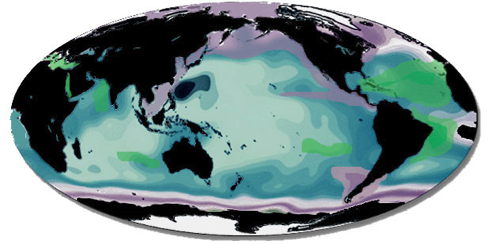Sign up for FlowVella
Sign up with FacebookAlready have an account? Sign in now
By registering you are agreeing to our
Terms of Service
Loading Flow

The salinity of seawater is usually 35 parts per thousand (also written as o/oo) in most marine areas. This salinity measurement is a total of all the salts that are dissolved in the water. Although 35 parts per thousand is not very concentrated (the same as 3.5 parts per hundred, o/o, or percent) the water in the oceans tastes very salty. The interesting thing about this dissolved salt is that it is always made up of the same types of salts and they are always in the same proportion to each other (even if the salinity is different than average). The majority of the salt is the same as table salt (sodium chloride) but there are other salts as well. The table below shows these proportions:
Salinity

Salinity map showing areas of high salinity (36 o/oo) in green, medium salinity in blue (35 o/oo), and low salinity (34 o/oo) in purple. Salinity is rather stable but areas in the North Atlantic, South Atlantic, South Pacific, Indian Ocean, Arabian Sea, Red Sea, and Mediterranean Sea tend to be a little high (green). Areas near Antarctica, the Arctic Ocean, Southeast Asia, and the West Coast of North and Central America tend to be a little low (purple).